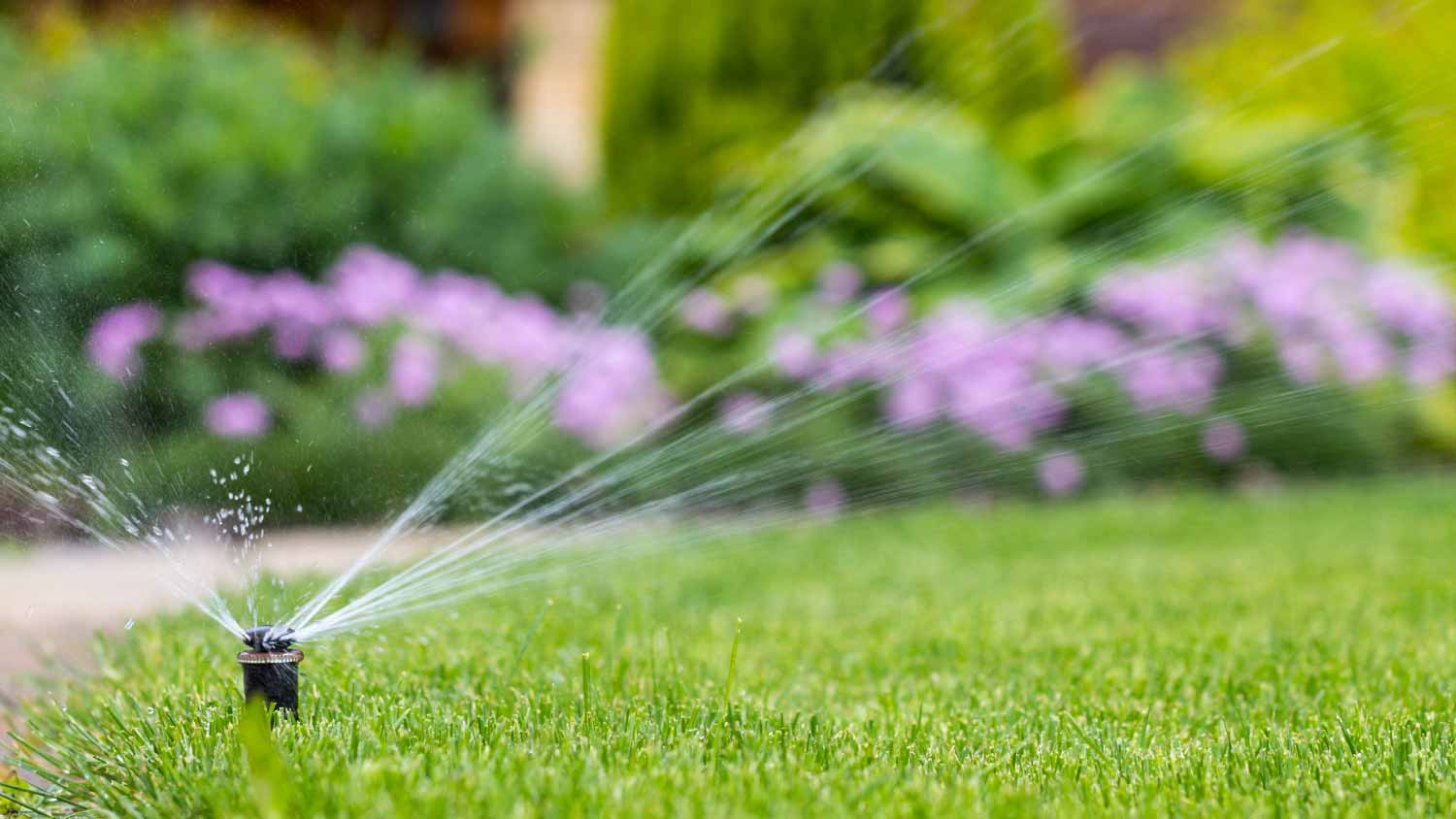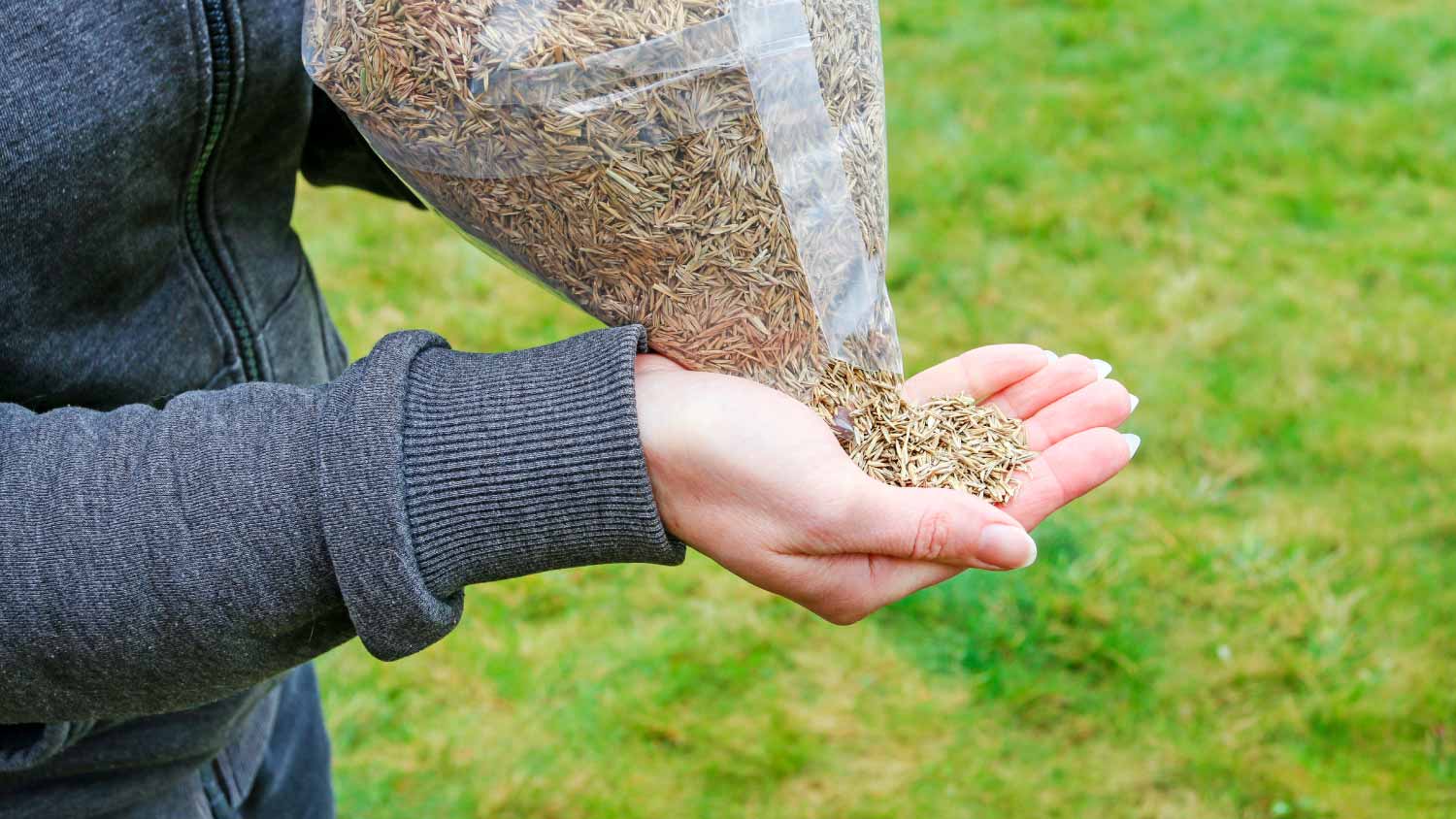How To Prepare Soil For Grass Seed For a Healthy New Lawn
A healthy lawn starts with a proper foundation


Accidentally creating a healthy lawn from seed is an extreme rarity. Installing grass seed may appear easy, but the job requires substantial preparation work, including learning how to prepare soil for grass seed. Regardless of the type of grass seed, adequate soil prep is crucial for making the most of your investment. Follow this guide to get your soil ready for grass seed to help ensure the success of your new lawn.
Why Should I Prepare the Soil for Grass Seed?
Grass seed is pretty fantastic stuff. With some care and patience, grass seed can grow into a beautiful new lawn within a few months. However, even the best grass seed will only perform as it should if specific conditions are in place for germination and growth.
The main purpose of preparing your soil for grass seed is to create the best possible starting conditions for your new lawn. By ensuring the soil structure is chemically correct and suitable for sustaining new roots, soil preparation before seeding is much easier than trying to repair an unhealthy lawn later. That’s why it’s worth hiring a lawn seeding professional to help prepare for and complete the spreading process.
When to Prepare Soil for Grass Seed
Prepare your soil for grass seed immediately before spreading the seeds. Depending on the type of grass you intend to grow and the growing season in your location, that may mean performing the task in mid- to late-spring after any chance of frost or up until about 90 days before the start of a dry season for the best results. Consult a professional lawn seeding service about the best timing to spread grass seed based on your soil type and climate area.
How to Prepare Soil For Grass Seed
Spreading the grass seed is one of the last of several steps necessary to give it the best chance of growing up healthy.
1. Test the Soil
Grasses grow best in mostly neutral soil. Neutral soil has a pH level of 7.0. Grass can tolerate slightly acidic soil down to around 6.0 pH. However, if the ground you intend to plant is too far out of that range—too acidic or too alkaline—your new grass may struggle to be healthy in the long term. You can test the soil using a kit or hire a local soil testing company to tell you the soil's status and recommend the right amending solution.
2. Remove Existing Vegetation and Debris

Getting rid of existing grass and vegetation helps you start from a clean slate and makes the rest of the seeding work easier. Remove clumps of existing grass with a shovel and use a garden tiller to break up hard soils.
After taking care of the big clumps, use the garden tiller to turn the rest of the soil in the entire area down to between four and seven inches deep. This step eliminates the difficulty of planting grass seed in hard dirt. Rake away any vegetation, clumps, twigs, roots, and debris.
3. Amend the Soil
Following the results from your test kit or instructions of your professional lawn seeder's advice, amend the soil with limestone, sulfur, compost, manure, or other product, depending on whether it starts as acidic or alkaline.
Limestone and similar products will increase the pH, while sulfur will decrease it. Mix the product into the ground by spreading the correct amount over the surface and tilling the area again.
4. Install the Sprinklers

If you plan to install a sprinkler system for your new lawn, now is the time to have your local sprinkler installation company do the work before the grass seed goes down. Be sure to talk with your sprinkler professionals about the ideal timing for planting grass seed post-installation.
5. Spread the Soil Evenly
The final step before spreading the grass seed is to even out the surface of your lawn. Use a rake or shovel to fill in low spots with soil from high spots, or fill in low places by adding new loose soil or compost from a garden center.
6. Spread the Seed

Spread the grass seed and cover it with a thin layer of new soil from a garden center or a loose covering of straw mulch and water appropriately for your chosen grass type. Don’t forget to spread starter fertilizer at the same time as the seed if necessary, depending on the soil test results and the kind of seed.
Tips for Starting Healthy Grass Seed
Properly preparing the soil is one of several steps necessary for ensuring the success of your new lawn. Follow these tips before and after soil prep for the best results.
Choose an appropriate grass seed variety for your climate and location.
Determine and choose the correct time of year for starting a new lawn. Spring to early summer is the best time in cold climates. However, slightly later in the season is often okay too.
Learn and follow the appropriate watering guidelines for the grass type you choose. Keep the top two inches of soil damp until the seeds germinate and become established.
Your new lawn requires around eight weeks before it's time to mow the new grass.
Make a plan for how and when to fertilize new grass seed, depending on the type of lawn. Your lawn may require you to fertilize several weeks before planting new seeds.
DIY vs. Hiring a Pro
Installing a new lawn using grass seed can be very time and labor-intensive. While the job is undoubtedly doable by DIYers with a weekend of free time, getting down and dirty with the task can require some hard work and the current tools and equipment.
If the job seems like a bit much to handle, or you just want assurance that the finished product is done correctly, a local lawn seeding company can handle the work for you. These lawn seeding pros can provide top-notch recommendations on how to prepare your soil for planting grass, and then they’ll take care of the seed installation so you can get back to enjoying the season.
Frequently Asked Questions
The easiest way to rough up soil to accept grass seed and provide the best opportunity for its growth is to make several passes over the area with a garden tiller and rake away the loosened vegetation and debris. However, in some cases, very hard ground may require using a shovel or pick to break up pieces into smaller chunks that the tiller can handle more easily.
Properly preparing the soil for planting grass seed may include applying fertilizer several weeks before spreading the seed if you plan to overseed the lawn. However, in most cases involving a brand-new lawn, spreading a starter fertilizer along with the grass seed will give it the best chance of taking root quickly and growing strong.





- How to Seed a Lawn For Lush and Healthy Results
- How to Grow Grass Fast: 8 Steps for a Rapidly Lush Lawn
- How to Power Seed Your Lawn—Plus, Cost Info and Tips for Greener Grass
- Can You Overwater Grass Seed? Tips for Getting Your Irrigation Just Right
- How Much Seed Do You Need For a New Lawn?
- How to Overseed a Lawn for Healthier Grass
- How to Grow New Grass for Your Lawn in Fall
- How To Tell If Grass Seed Is Germinating And Growing Into A Lush Lawn
- What Do You Put Down First: Grass Seed Or Fertilizer?
- How Long Does It Take for Grass Seed to Grow? Timeline, Care Tips, and More










